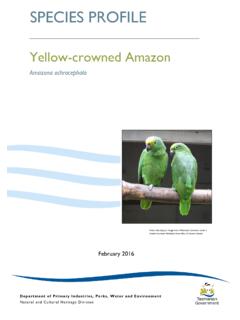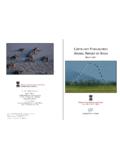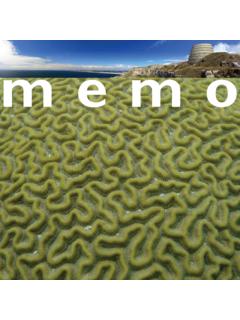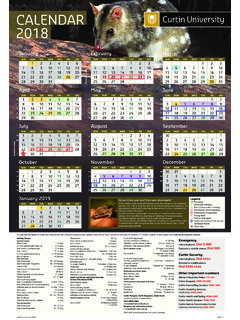Transcription of Husbandry Guidelines - Clouded Leopard Project
1 1 Clouded Leopard (Neofelis nebulosa) Husbandry Guidelines (originally published 2000)Disclaimer: The information provided here is a guideline and is a result of the collective experiences of a number of Clouded Leopard managers. Scientific studies conducted since publication of this original document and other management practices developed since may alter these Guidelines . The Clouded Leopard SSP does not support ownership of Clouded leopards by those individuals/facilities not qualified to care for them. The SSP strongly discourages ownership of Clouded leopards as pets.
2 IntroductionThe Clouded Leopard (Neofelis nebulosa) is a medium-sized cat found in the jungle and forested regions of Malaysia and the countries of Southeast Asia. First mentioned by Sir Stamford Raffles in the Descriptive Catalogue of a collection made in Sumatra it was given the scientific name of Felis nebulosa by Griffith in 1821. Known common names in range countries include harimau-dahan (branch or tree tiger) or mint Leopard by the Chinese due to its markings being similar to mint leaves. Regardless of its name one thing is readily accepted-this cat is arguably the most beautifully marked felid and perhaps the most challenging to study.
3 Little to nothing is known of its habits in the wild. This has compounded captive management efforts as this species ' behavior is most unique. This document is designed to serve as a jumping off point by offering Guidelines for current captive management practices and, perhaps more importantly, to encourage intensive study of this species in captivity and in the wild. Information included in this document has been drawn from the experiences of Clouded Leopard managers as well as published works.
4 2 Natural HistoryRange Historically the Clouded Leopard was found from Nepal to Indochina, Indonesia, southern China and Taiwan. Population numbers are thought to be lower outside protected areas and are probably healthiest in Borneo because of the absence of tigers and leopards. Surveys in Borneo suggest a density of one individual per 4 square kilometers. Four sub- species are recognized: Neofelis nebulosa brachyurus: Taiwan. Probably extinct in the nebulosa diardi: Sumatra, Borneo and JavaNeofelis nebulosa macrosceloides: Nepal to BurmaNeofelis nebulosa nebulosa: Southern China to East BurmaHabitat Once thought to be highly arboreal, recent evidence indicates the Clouded Leopard may spend considerable amount of time on the ground.
5 Its arboreal talents are numerous it can hang upside down from branches by its hind feet, climb on horizontal branches with its back to the ground and run headfirst down tree trunks. These talents are most likely utilized to move through the trees and for hunting. Clouded leopards are most closely associated with primary evergreen tropical rainforest but do utilize other types of habitat such as secondary and logged forest, dry tropical forest, mangrove swamps, grassland and scrub. Sightings at elevations as high as 1,450 meters in the Himalayans have been reported.
6 They are primarily Birds, primates (proboscis monkey, pig-tail and other macaques and gibbons), muntjac and wild pigs. Clouded leopards are thought to stalk from the ground and ambush from the Organization Due to their highly secretive nature virtually nothing is known of the Clouded Leopard s habits in the wild. Knowledge of its social behavior is based on observations of this species in zoological institutions. In captivity they are typically housed with the same mate for life once they are paired. Mated pairs are most successful when animals are introduced by one year of age.
7 3 Conservation Status The cat is listed as Vulnerable in the iucn red Data Book, as Appendix I species under CITES and Endangered under the United States Endangered species Act. The species is estimated to be in decline based upon the decreasing number of sightings of live Clouded leopards by resident peoples within its range. Physical DescriptionThe Clouded Leopard is sometimes described as bridging the gap between large and small cats. In general the Clouded Leopard is short in stature with short legs and a long body.
8 The head is large in proportion to the rest of its body and the tail is nearly as long as the body. Body length (head, body and tail) averages meters. Body weights range from 11 to 20 kilograms for adults. Shoulder height is 50-55 centimeters. Males tend to be larger than leopards have an ossified hyoid that allows them to purr but not roar. They also can make a very distinctive chuffing sound as well as other vocalizations. When threatened this cat can make a sound similar to a roar that is unnerving to the unfamiliar.
9 The Clouded Leopard is capable of climbing down vertical branches with ease and frequently hangs from its rear head and neck of the Clouded Leopard is patterned variably but general characteristics do occur. There are rows of fine spots (some running together) on top of the head. Patterns of smaller dark spots on the sides of the head lead to stripes predominating on the cheeks. Eyes are large with vertical apertures. Short rounded ears are black on the backside with lighter colored central patches. The most prominent feature of the Clouded Leopard head is the unusually large canines.
10 These teeth can be cm long and have a very sharp back edge. The canines in the Clouded Leopard are the largest in relation to body size of any extant feline and it is the closestliving relative to Smilodon tatalis. The body pattern is one of elliptically shaped black edged spots with the insides of the spots generally darker in color than the background pelt color. Pelt color is widely variable from ochre to tawny brown to silvery gray. Melanistic as well as pale white individuals are reported in the literature. Two longitudinal black stripes run along the back.





